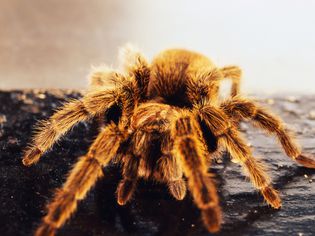Beyond Basics: Why Pet Enrichment is Essential
Enrichment isn’t luxury; it’s fundamental to pet welfare. It addresses instinctual needs – hunting, foraging, exploring, and problem-solving – often suppressed in domestic settings. Studies link inadequate enrichment to anxiety, obesity, and destructive behaviors. Proactive enrichment prevents 68% of common behavior issues, promoting physical health and mental resilience.
Five Core Pillars of Effective Enrichment
Environmental Enrichment: Reshaping Their World
Vertical Space (Cats): Install catwalks, sturdy shelves, or window perches. Cats feel secure observing territory from height.
Safe Outdoor Access: Use catio enclosures or harness training for supervised exploration. For dogs, rotate walking routes for novel smells.
Designated Zones: Create distinct areas for rest, play, feeding, and elimination using furniture or room dividers.
Novelty Rotation: Cycle toys and rearrange safe furniture elements weekly to prevent habituation.
Food-Based Enrichment: Engaging the Forager
Puzzle Feeders: Utilize commercial slow feeders (Kong Wobbler, Outward Hound) or DIY versions (muffin tin with tennis balls covering kibble).
Scatter Feeding: Hide small portions of dry food around safe areas for dogs/cats to “hunt.”
Novel Food Experiences: Offer species-safe, varied textures like frozen bone broth cubes, lick mats with wet food, or whole (washed) sardines.
Foraging Toys: Stuff rubber toys with kibble/frozen puree, encouraging extended effort. Replace 30% of meals with foraging activities.
Social & Interactive Enrichment: Quality Connection
Structured Play: Dedicate 10-15 minute sessions multiple times daily using flirt poles for cats or fetch/tug with clear start/end cues for dogs.
Training Games: Teach new cues or tricks using positive reinforcement (clicker training). Mental work is deeply tiring.
Controlled Socialization: Arrange safe, positive interactions with compatible pets or calm humans, respecting individual tolerance levels. Never force interaction.
Cognitive Enrichment: Challenging the Mind
Problem-Solving Toys: Introduce progressively difficult puzzle toys requiring sliding levers, lifting lids, or matching shapes.
Scent Work Games: Hide treats or favorite toys and encourage searching using the cue “Find it!” Start easy, increase difficulty.
Novel Learning: Teach names of toys or simple household item retrieval. Use shaping techniques for complex behaviors.
Sensory Stimulation: Engaging All Faculties
Olfactory (Smell): Introduce new, safe scents like dried herbs (catnip, valerian for cats), snuffle mats soaked in broth, or outdoor “scent safaris.”
Auditory (Sound): Play species-specific calming music (Through a Dog’s Ear) or nature sounds at low volume when alone. Avoid constant loud TV.
Visual (Sight): Provide window access with bird feeders outside, or use battery-operated moving toys under supervision. Fish tanks can fascinate some pets.
Tactile (Touch): Offer varied textures: cardboard scratchers, digging boxes (sand/rice in a kiddie pool for dogs), cooling mats, fleece blankets.
Implementing Your Enrichment Plan: Key Strategies
Species & Breed Specificity: Terriers need digging outlets; sighthounds thrive on visual chase games; rodents require complex burrowing setups.
Individual Preferences: Observe your pet. Does your cat ignore wand toys but love crinkle balls? Does your dog prefer chewing over fetching?
Safety First: Supervise new activities. Ensure toys are size-appropriate and indestructible enough for your pet’s chewing strength. Avoid small parts.
Consistency & Rotation: Incorporate enrichment into daily routines. Rotate activities to maintain novelty and prevent boredom. Track what works best.
Observe & Adapt: Watch for signs of frustration (whining, abandoning activity) or excessive difficulty. Adjust the challenge level accordingly. Signs of success include relaxed body language, focused engagement, and natural behaviors like scratching appropriate surfaces.
Beyond Boredom: The Lifelong Benefits
A thoughtfully enriched environment profoundly impacts pet wellbeing. Expect reduced stress markers (like excessive grooming or barking), decreased destructive chewing, healthier weight management through active engagement, and stronger human-animal bonds built on shared positive experiences. Ultimately, enrichment transforms pet care from mere maintenance to fostering a truly thriving companion.
Start Small Today: Audit your pet’s current environment. Choose one new enrichment strategy from the pillars above and implement it this week. Observe the difference proactive engagement makes.










Comments on "Pet Enrichment: Creating a Stimulating Environment for Your Pet" :